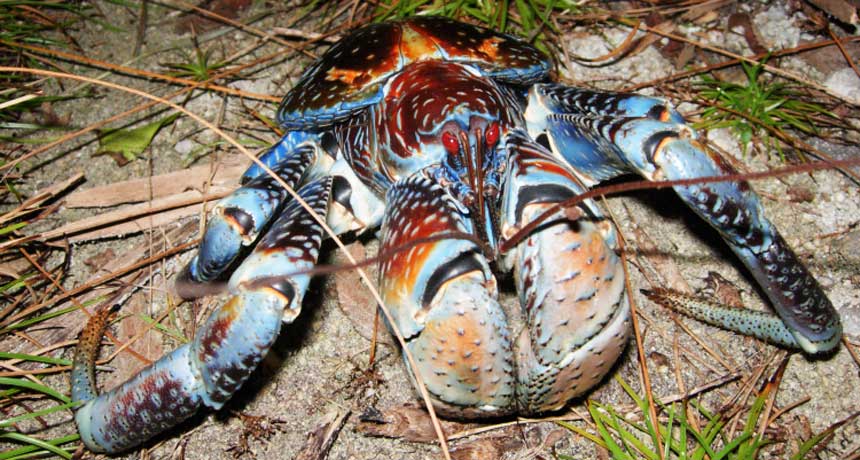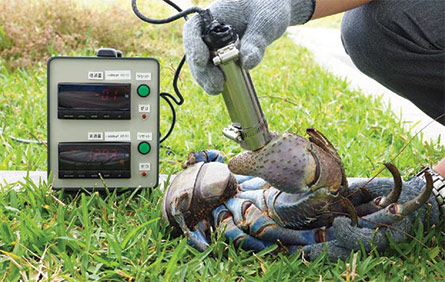Coconut crab pinches like a lion, eats like a dumpster diver
The giant crustaceans use their mighty claws to scavenge, hunt

SOUTHPAW STRENGTH Birgus latro, the largest known crab species on land, scavenges with a mighty left claw strong enough to crack a coconut.
© 2013 Luca Tringali/CalPhotos (CC BY-NC-SA 3.0)







